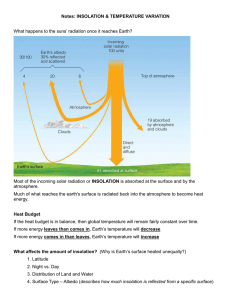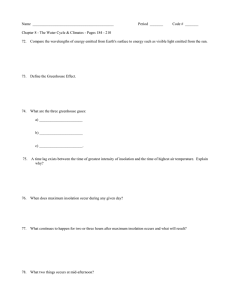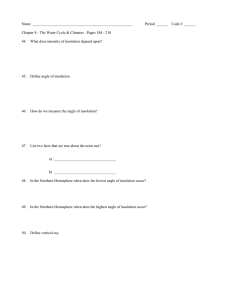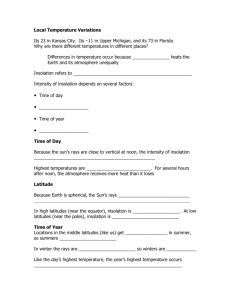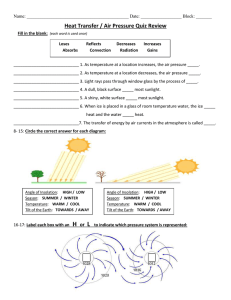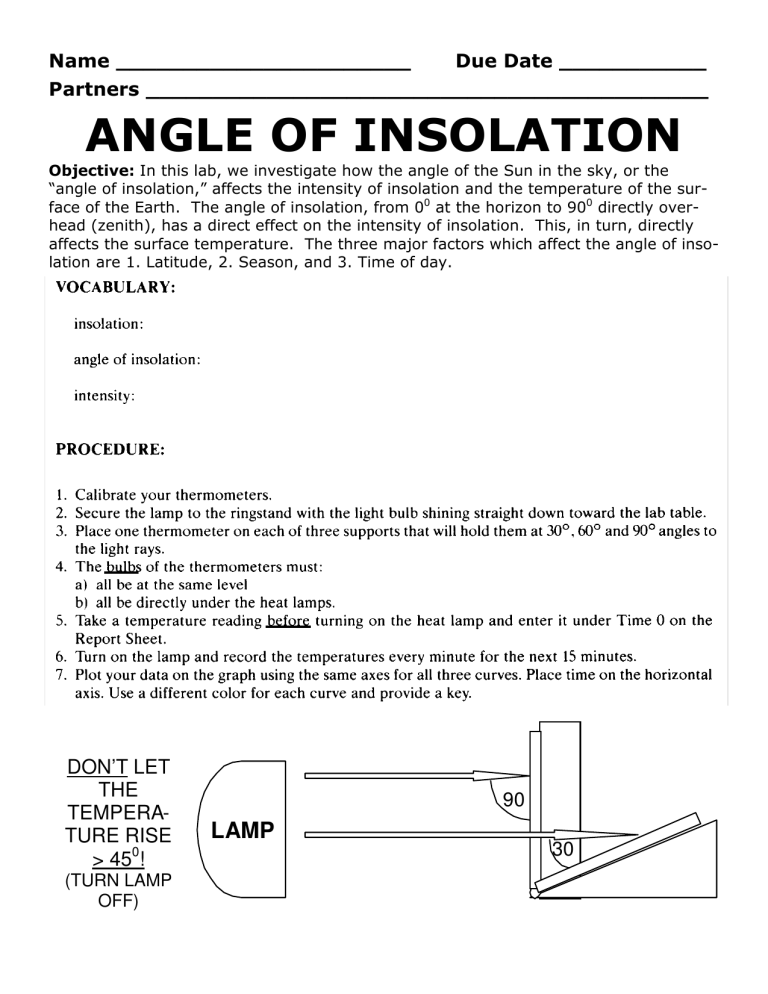
Name ______________________ Due Date ___________ Partners __________________________________________ ANGLE OF INSOLATION Objective: In this lab, we investigate how the angle of the Sun in the sky, or the “angle of insolation,” affects the intensity of insolation and the temperature of the surface of the Earth. The angle of insolation, from 00 at the horizon to 900 directly overhead (zenith), has a direct effect on the intensity of insolation. This, in turn, directly affects the surface temperature. The three major factors which affect the angle of insolation are 1. Latitude, 2. Season, and 3. Time of day. DON’T LET THE TEMPERATURE RISE > 450! (TURN LAMP OFF) 90 LAMP 30 45 QUESTIONS: most direct (vertical) rays, so its temperature was _____________ than the 40 1. The ________ thermometer received the 2. The ________ thermometer received the least direct rays, so its temperature was _______________ than the others. 3. The angle of insolation tends to be highest at ___________ latitudes, and lowest at ___________ latitudes, so high lati- Temperature (0C) 25 30 35 others. tudes tend to have ____________ tem- 20 peratures. 4. From the winter solstice (Dec. 21) to the angle of insolation 15 summer solstice (Jun. 21) in NYS, the ____________________. 1 2 3 4 5 6 7 8 9 10 11 12 13 14 15 Time (M) CONCLUSION: What is the relationship between the angle of insolation, the intensity of insolation, and the Earth’s surface temperature?
